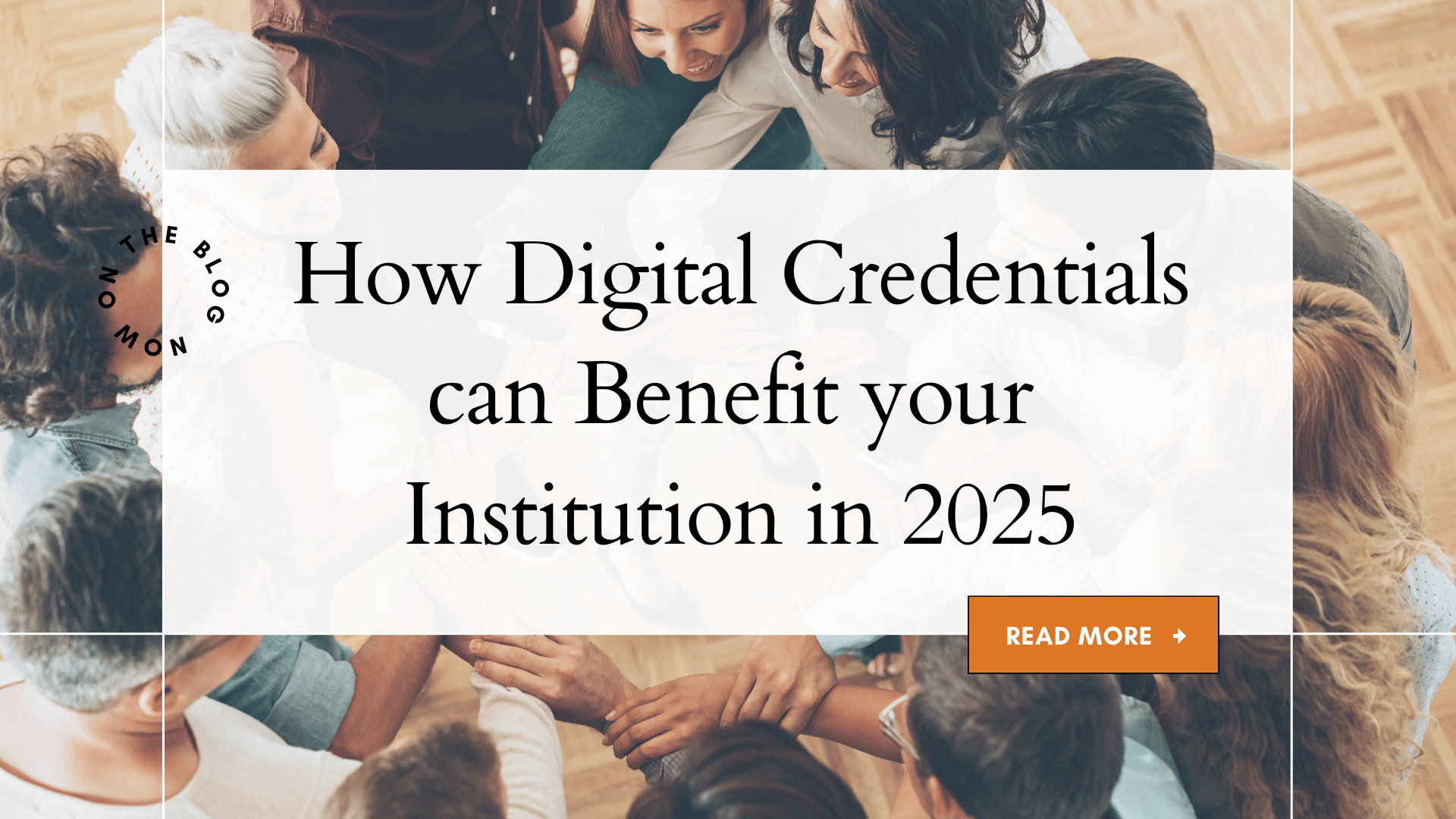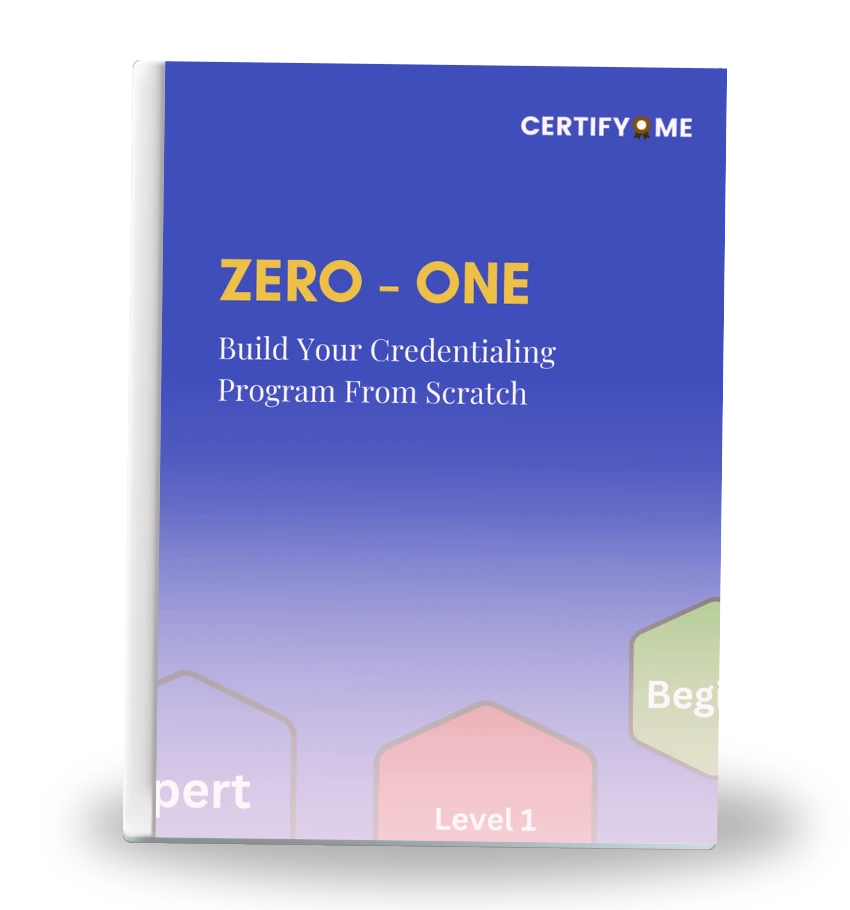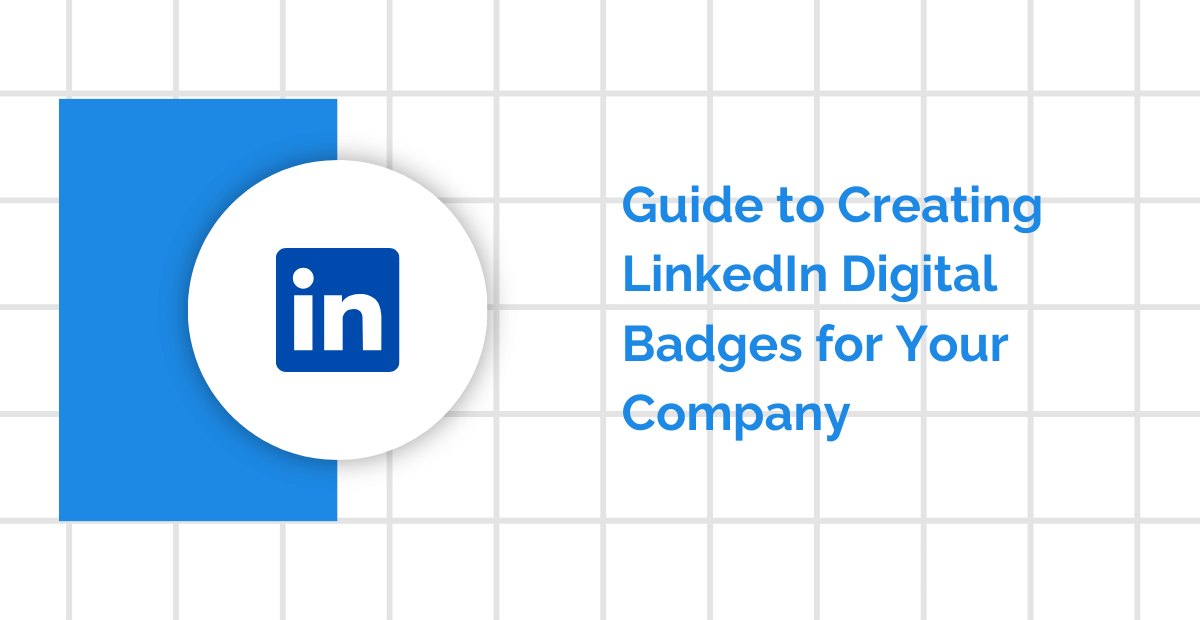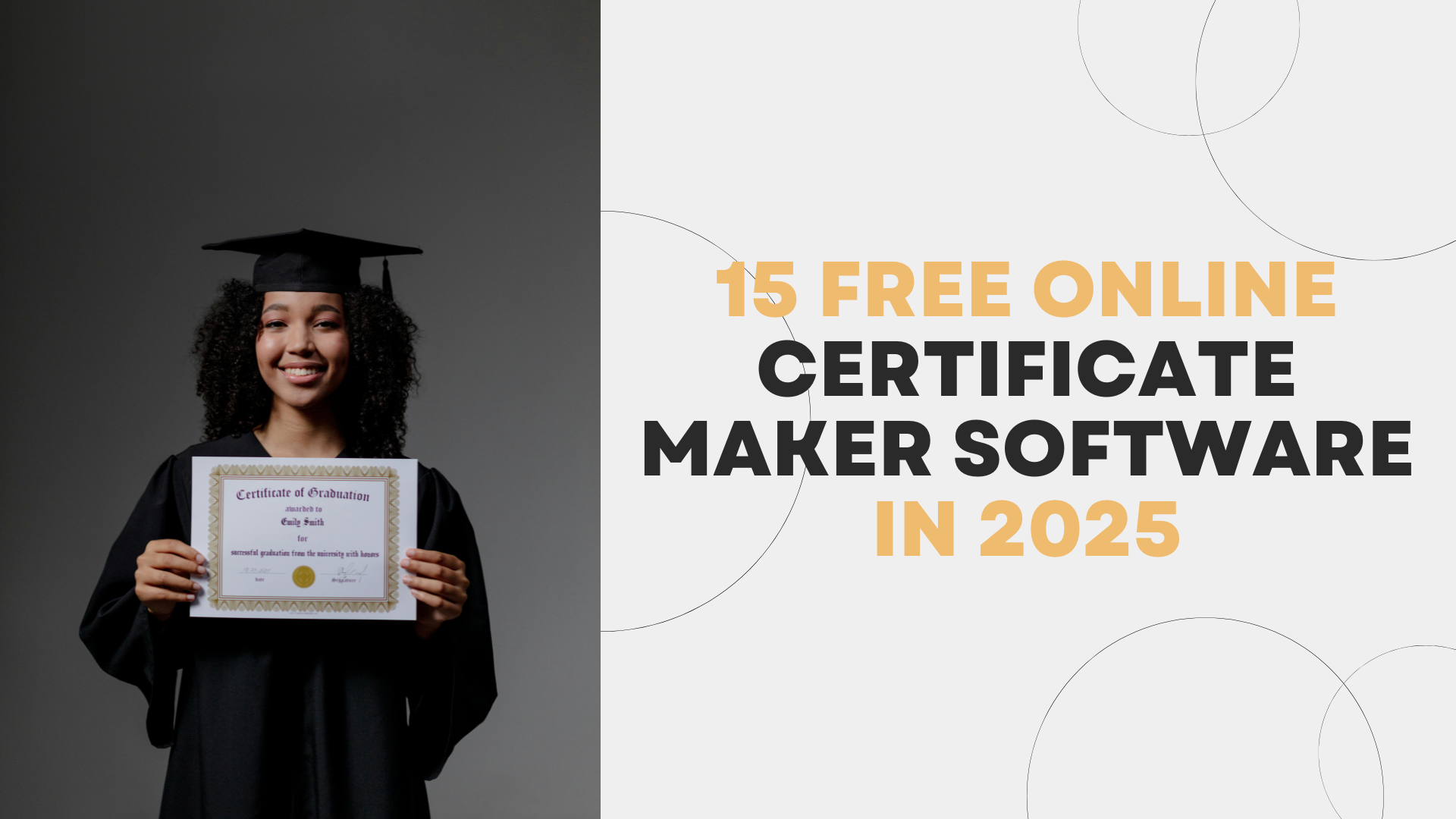Have you ever wondered what happens when a diploma steps into the digital age?
Think about it—paper credentials have worked for decades, but in today’s fast-paced, digital-first world, they’re starting to show their age. From slower processing times to the risk of fraud or misplacement, traditional credentials create more friction than we realize. That’s where digital credentials step in—offering institutions a smarter, safer, and more efficient way to issue and manage academic proof.
And the best part? They don’t just help students—they help you, the institutions, too.
In this blog, we’ll walk through how digital credentials can actually make your job easier, your processes tighter, and your reputation stronger.
Why Should Institutions Care About Going Digital?
Let’s face it—universities are under more pressure than ever. Rising costs. Changing student expectations. The growing demand for transparency and trust.
So, what if there was a way to:
-
Cut operational costs,
-
Improve security,
-
Promote the institution’s brand, and
-
Appeal to digitally native learners?
Digital credentials offer all of this—without needing a massive system overhaul.
Not quite sure what a digital credential actually includes? Check out this quick explainer on what a digital credential is to get the full picture.
This isn’t about chasing trends. It’s about aligning with the future of academic recognition, while preserving the integrity of higher education.
Today’s learners live in a world of instant downloads, real-time updates, and mobile-first everything. When they wait weeks for transcripts or juggle paper certificates, it doesn’t just frustrate them—it quietly signals that the institution is stuck in the past. And for higher ed, that perception matters more than ever.
By going digital, institutions not only meet student expectations but also streamline their internal processes, protect their reputation, and adapt to a world that’s already moved online.
Think of it like this: just as libraries evolved from card catalogs to digital databases, credentialing systems are due for their own upgrade. And it’s not about being trendy—it’s about being relevant and reliable.
Going digital doesn’t mean throwing away tradition. It means preserving the value of your credentials in a format that today’s learners and employers can actually use.
Whether you’re issuing degrees, micro-credentials, or continuing education badges, the digital format gives you more control, more transparency, and more reach.
Save Money, Time, and Staff Resources
The cost of issuing paper credentials adds up. Printing, postage, administrative labor, follow-ups for replacements—it’s an expensive process masked by tradition.
Digital credentials help institutions reduce costs in three big ways:
-
No Printing, No Shipping
Everything is digital. There’s no need to print, package, or ship diplomas and certificates. That’s dollars saved with every credential issued.
-
Streamlined Verification
Students often request official transcripts or degree verifications multiple times. With digital credentials, employers or institutions can verify with a single click—no staff intervention needed.
Organizations like the National Student Clearinghouse are also recognizing the value of digital verifications in simplifying student records.
-
Fewer Replacement Requests
Paper gets lost. Digital doesn’t. A student can retrieve their credentials anytime, from anywhere. That means fewer calls and fewer reprints.
Want to see how this works in action? Here’s an e-learning case study showing how one institution transformed their credentialing process with measurable results.
Think of it like having an AI receptionist for your records office – automating repetitive work so your staff can focus on what truly matters.
Strengthen Your Security and Trust
In an age of deepfakes and fake degrees, credential fraud is real—and growing. Employers are becoming more cautious. Verifying academic claims is no longer optional; it’s essential.
Digital credentials are built for verification.
-
Tamper-Proof Technology
Most platforms use cryptographic seals or blockchain verification, which means once a credential is issued, it can’t be altered or faked.
-
Instant Authenticity Checks
Anyone with the credential link can instantly verify it’s legitimate—no phone calls or email confirmations required.
-
Reduced Risk of Human Error
Manual entry mistakes? Eliminated. Data is generated from institutional systems and securely published.
Imagine the confidence it builds when an employer clicks a link and sees the university’s name, the credential details, and a clear “Verified” seal—all within seconds.
Let’s be honest—paper documents are easy to fake, lose, or damage.
Digital credentials change that. With blockchain-backed or digitally signed formats, these credentials come with built-in verification. That means students can share them instantly, and employers or institutions can trust what they see—no second-guessing, no follow-up phone calls, no bottlenecks.
This shift matters more now than ever. With the rise in credential fraud and diploma mills, schools that issue verifiable digital credentials send a strong message: We take integrity seriously. And students take notice of that too—when they know their achievements are being protected, they’re more likely to feel respected and proud of their institution.
Institutions also benefit from less administrative strain. Instead of tracking down records or manually confirming achievements, your staff can rely on automated systems that do the heavy lifting. That’s time saved, stress reduced, and confidence gained—for both staff and students.
Learn more about diploma mills and credential fraud from the U.S. Department of Education.
Promote Your Institution with Every Share
Here’s something many institutions overlook: digital credentials aren’t just functional—they’re promotional.
Every time a student shares their diploma on LinkedIn or they while generation portfolio using a portfolio generator when you add your certificated to a digital portfolio. It carries your institution’s name and credibility with it.
This does three important things:
-
Enhances Brand Visibility
Your name is visible every time that credential is viewed or shared. It’s like digital word-of-mouth marketing.
-
Demonstrates Transparency
Prospective students and parents see that you provide modern, verifiable credentials—proof that you’re invested in quality and innovation.
-
Highlights Achievements Authentically
Each credential is more than a certificate; it’s a story. A skill. A qualification. And it points back to you.
Think of it as a digital echo—every time a credential is shared, your institution’s voice is amplified.
Every time a student posts their digital credential online, they’re not just celebrating—they’re marketing your institution.
In fact, many EdTech companies have already accelerated their growth using digital credentials to build trust, improve learner engagement, and increase visibility.
Think about it: a verified badge or certificate on LinkedIn doesn’t just show what the student achieved. It also tells the world where they achieved it. That kind of visibility is priceless, especially when it comes from real people sharing authentic moments of pride.
Unlike traditional marketing campaigns, these digital shares are organic and personal. They reach friends, family, recruiters, and future students—without costing you a cent. And over time, the more students that post, the more your institution shows up in conversations that matter. It’s like word-of-mouth, but supercharged through digital networks.
Plus, it reinforces your credibility. If hundreds of alumni are showcasing your name with verified credentials, it builds quiet confidence in your brand. It tells prospective students and employers alike, “This school is serious about its standards.”
Attract a New Generation of Learners
Today’s students grew up with smartphones. They expect their services—education included—to reflect the digital world they live in.
When your institution offers digital credentials, you signal that you’re keeping up with the times. Not just in tech, but in values—efficiency, accessibility, and personalization.
-
Modern students expect on-demand access
Why wait weeks for a paper diploma when a digital one can be delivered instantly?
-
They want tools that fit their lives
A digital credential can be added to a résumé, portfolio, job site, or social media profile in minutes.
-
They care about institutional values
Offering secure, eco-friendly credentials shows a commitment to sustainability, innovation, and learner empowerment.
Today’s learners are digital natives. They expect fast results, mobile access, and platforms that work the way their lives do.
If your institution can’t meet those expectations, they’ll simply look elsewhere. Students now choose programs not just for content, but for the overall experience—including how credentials are delivered and used after graduation.
Digital credentials tick all those boxes. They’re portable, immediate, and easy to integrate into a student’s online presence. Whether someone’s applying for a job, a fellowship, or another academic program, having a verifiable credential ready to go puts them one step ahead—and reflects well on the institution that gave it to them.
And here’s the key: when you adopt digital credentials, you’re not just upgrading tech—you’re signaling progress. You’re showing future students that your institution understands them, values their time, and is prepared to support them in a modern, efficient way.
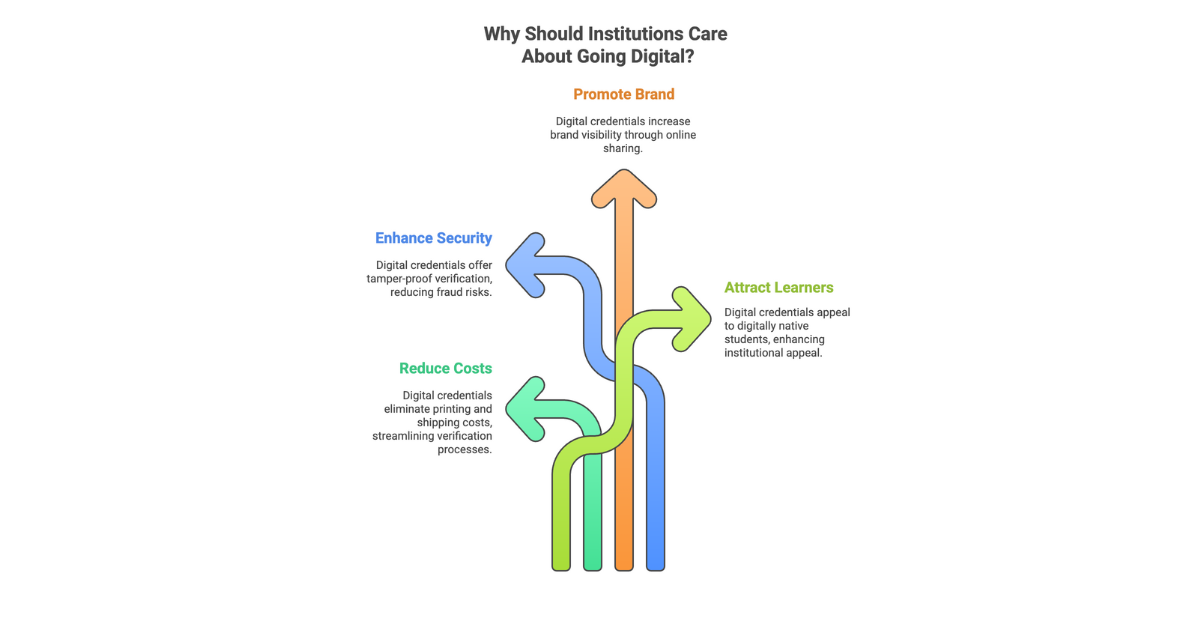
What Do Institutions Actually Gain?
Let’s cut through the buzzwords for a minute—what do institutions really get out of going digital with credentials? At first glance, it might just look like a fancy way to issue certificates online. But when you zoom in, digital credentials offer something far more valuable: efficiency, credibility, and a better experience for everyone involved—from the registrar’s desk to the student walking across the graduation stage.
Here’s how the benefits unfold:
Lower operational costs
Printing, mailing, replacing lost diplomas—it all adds up. With digital credentials, institutions save money and time by eliminating repetitive manual tasks. Staff can redirect their focus to higher-priority work, instead of getting stuck in paperwork loops.
Brand visibility and program promotion
Every time a student shares a credential on LinkedIn or a digital portfolio, your institution gets exposure. Think of it like a modern version of word-of-mouth—but on a much bigger, digital scale. It’s free marketing that builds credibility with prospective students, employers, and partners.
Stronger student trust and satisfaction
Today’s learners expect fast, digital-first services—and when you deliver that, it builds real trust. Giving them credentials they can access, use, and share instantly creates a positive post-graduation experience. And satisfied students? They talk. They refer. They return.
Furthermore, real-time access to academic records empowers students to take control of their educational journey. Ultimately, this trust and satisfaction enhance the institution’s reputation and competitiveness in a crowded market.
Improved security and verification
Digital credentials are tamper-proof and easy to validate. That means less time spent fielding calls to confirm legitimacy—and less risk of fraud. In an age where diploma mills are still a thing, this added layer of authenticity matters more than ever.
Data-driven insights
Some digital credential platforms even allow institutions to track how and where credentials are being used. That gives you useful data on student outcomes, employer engagement, and alumni activity—insights that can feed into marketing, funding, and future planning.
Digital credentials aren’t just a tech upgrade—they’re a practical, scalable way to modernize your institution’s operations and strengthen relationships with students. You’re not adding another layer of complexity; you’re removing the friction that comes with traditional methods.
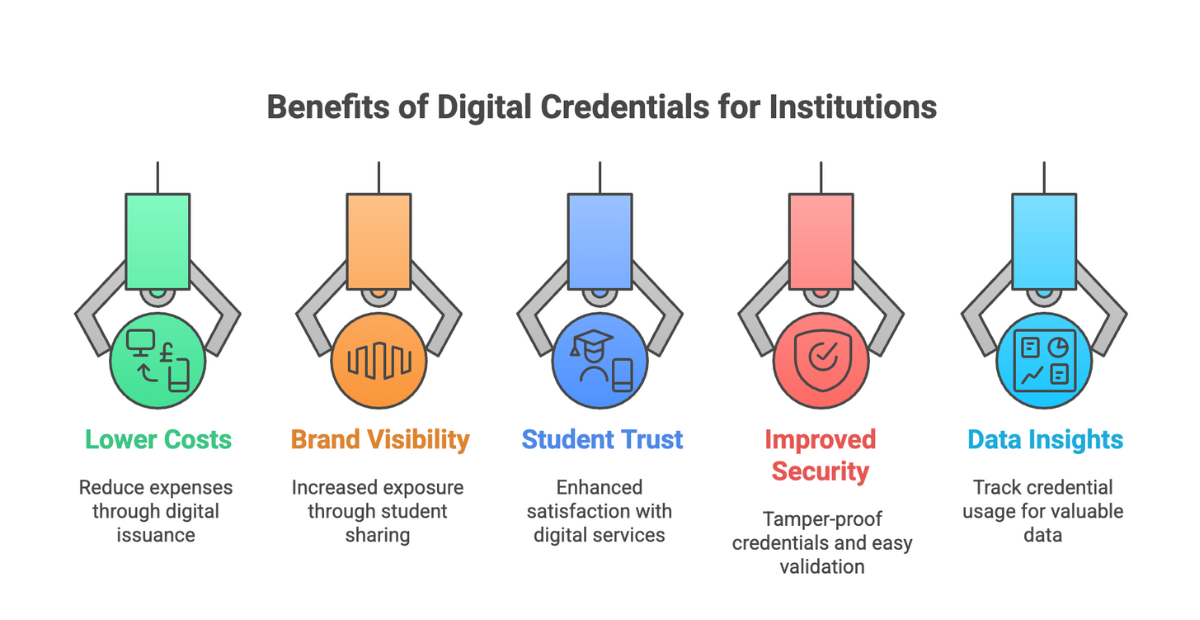
What’s the Catch? Is It Hard to Get Started?
Fair question. It’s natural to be cautious when introducing new tech—especially in the education sector, where systems are often complex.
The good news? Most digital credential solutions integrate with existing systems, whether it’s your Student Information System (SIS) or Learning Management System (LMS).
Here’s what the transition often looks like:
-
Choose a credentialing platform (many are education-focused)
-
Map out what credentials you want to digitize (degrees, transcripts, micro-credentials, etc.)
-
Pilot the program with a small cohort or department
-
Collect feedback, optimize, and expand
You don’t have to digitize everything at once. Start small. Grow steadily.
Curious how the entire system works behind the scenes? A digital credential management platform is what brings everything together—from issuing to tracking to verifying.
Some institutions begin by digitizing only certificates for short courses or continuing education. Others start with graduate programs. The goal is to test, adjust, and gradually make it part of the academic ecosystem.
It’s Time to Think Forward
The world of education is evolving—and the way we issue, verify, and showcase learning must evolve too.
Digital credentials aren’t a passing trend. They’re a practical solution to long-standing challenges. From administrative efficiency to employer trust, from student engagement to institutional branding—they check all the boxes.
If your institution is still relying solely on paper credentials in 2025, it might be time to reassess. Not just because it’s outdated, but because you could be missing out on tangible benefits—ones that improve your operations, reputation, and learner outcomes.
Higher education has always been about preparing students for the future—but what about preparing the institution for the future?
As technology reshapes the world around us, universities that adapt early are the ones that thrive. Embracing digital credentials isn’t about chasing trends—it’s about recognizing where student needs, industry demands, and institutional efficiency all intersect. This is one of those rare moments where innovation also makes things simpler.
Forward-thinking doesn’t mean overhauling everything overnight. It starts with one small shift—like making credentials digital—and grows from there.
When you take that step, you’re not just updating systems; you’re setting your institution up for resilience, trust, and long-term relevance.
If you’re wondering where this is all heading, you’re not alone. Take a look at what the future of digital credentials looks like to see how higher education is evolving globally.
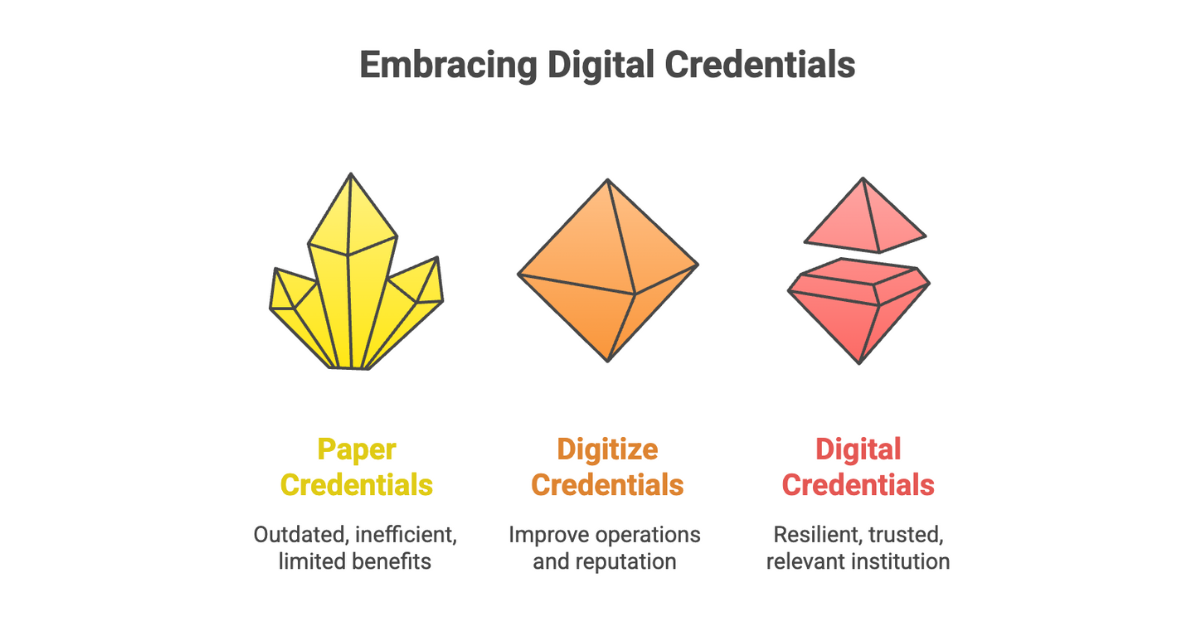
Conclusion
In the big picture, digital credentials aren’t just about replacing paper—they’re about upgrading how institutions function behind the scenes. From reducing costs and saving admin time to protecting data and reinforcing your institution’s credibility, these tools help you keep up without burning out.
And let’s be honest—managing records shouldn’t feel like juggling fire. It should feel simple, secure, and maybe even a little satisfying.
Students want credentials they can trust, share easily, and use right away—and institutions want systems that work smarter, not harder. With digital credentials, you’re meeting both needs in one clean move.
You’re not only improving the student experience but also strengthening your institutional brand. That kind of win-win isn’t just convenient—it’s necessary in a world that’s already gone digital.
If you’re curious about how to put this into practice, tools like CertifyMe make the switch simple and meaningful. It helps institutions issue secure, verifiable digital records without hassle—while also promoting their programs and protecting their data.
With CertifyMe, you’re not starting from scratch; you’re building on a smarter foundation. Interested in seeing it in action?
Book a demo today and explore how your institution can take the next step forward—with confidence.

 Author :
Author : 